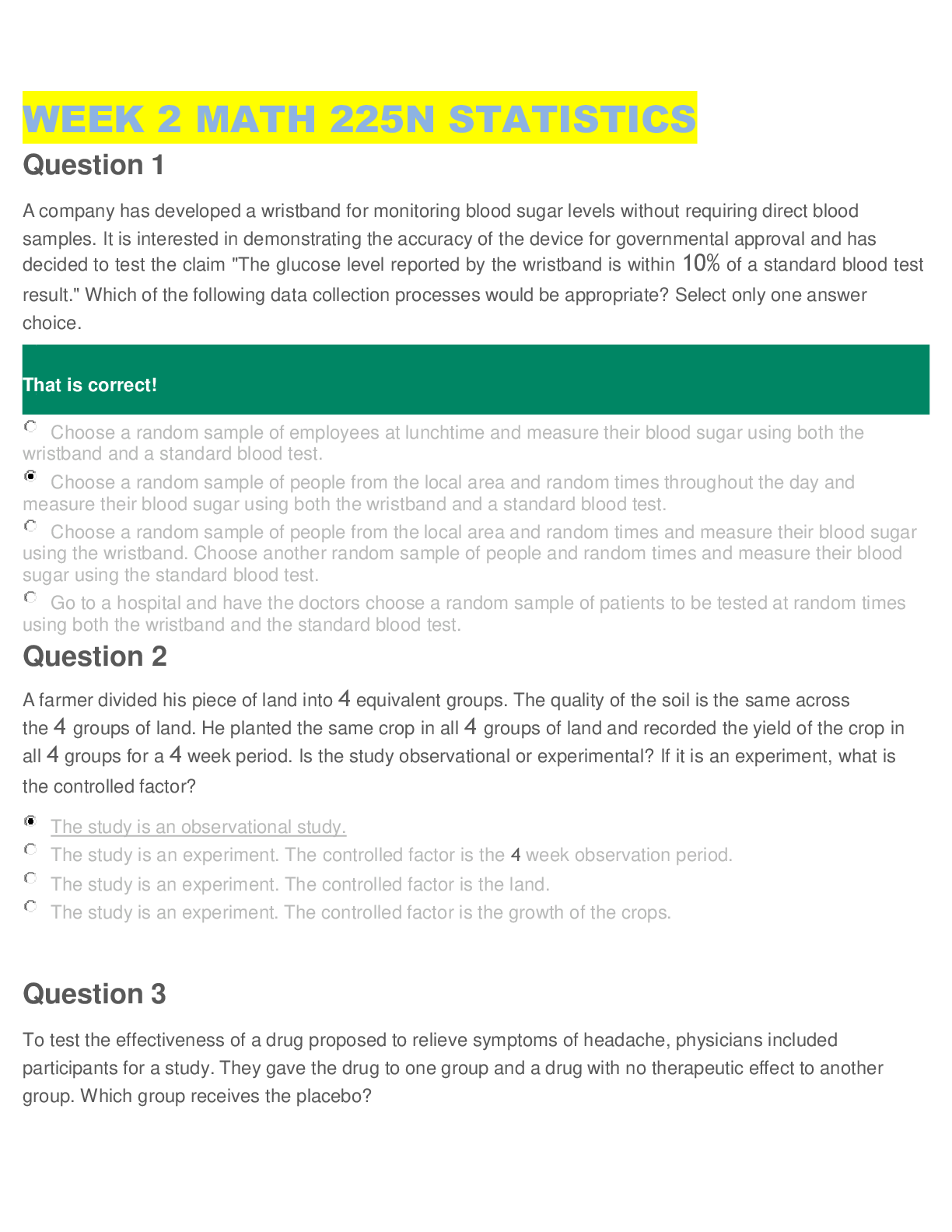BioChemistry > EXAM > BIO102 Unit 8 The Urinary System Assignment 1 ALL ANSWERS 100% CORRECT GUARANTEE GRADE A+ (All)
BIO102 Unit 8 The Urinary System Assignment 1 ALL ANSWERS 100% CORRECT GUARANTEE GRADE A+
Document Content and Description Below
1. Characterize the roles of each of the parts of the urinary system. (Kidneys, nephrons, ureters, urinary bladder, and urethra) Kidneys: Excretes unwanted substances, such as cellular metabolic wa... ste, excess salts, toxins, and urea, water balance, pH balance, blood pressure regulation, and regulation of RBC production. Nephrons: A nephron is to the urinary system as the neuron is to the nervous system. There are about 1 Million in each kidney. Ureters: The ureters are 2 long and slender muscular tubes that uses peristalsis and gravity to move urine along. They extend from the kidneys. Urinary Bladder: The urinary bladder is a temporary reservoir for urine, and it has many layers. It is lined with mucous membrane, and it has transitional epithelium. The bladder has rugae when it is empty. Urethra: The urethra is the tube that extends from the bladder, and it leads to the outside of the body. 2. Trace the flow of blood through the kidney and describe how blood is filtered in the kidney nephron. Renal artery through arcuate arteries through cortical radiate arteries through Afferent arteriole through Glomerulus through Efferent arteriole through Peritubular capillaries and vasa recta through Arcuate vein through Renal vein through Inferior vena cava. 3. Provide symptoms of kidney failure and describe the normal versus abnormal urine composition. (normal range of pH, osmolarity, and volume) Normal Urine- pH 4.5-8.9 (6.0 average) and Specific gravity- 1.001-1.035 also contains urea, sodium, potassium, phosphate, sulfate, creatinine, uric acid, and other ions. Abnormal Urine- High glucose: Diabetes; High ketones: Starvation, if contains sugar as well-Diabetes; Proteins: High protein diet or UTI; Albumin: Glomerular damage; RBCs- Renal calculi, Infection, Trauma; Hemoglobin: Transfusion Rxn, Hemolytic Anemia, Burns; WBCs: Inflammation, UTI; Bilirubin, Liver problems (HepC) Blood Osmolarity: Is a measure of the overall concentration of particles in the blood and is a good indicator of hydration status. Normal range is 285- 295 (285-301 in older adults) 4. List some of the solutes filtered, secreted, and reabsorbed in different parts of the nephron. Glomerular Filtration: 1st step in urine production, most solutes in blood plasma move across walls of glomerular capillaries, into glomerular capsule and renal tubule. Tubular Reabsorption: Return important substances to body, 99% of filtered water is reabsorbed. almost every membrane transport method is used Tubular Secretion: Fluid flows along renal tubules and collecting ducts. tubules and ducts secrete waste, drugs, and excess ions from blood into fluid 5. Describe the role of a portal system in the kidney. It filters fluid out of blood and into tubule lumen (glomerular capillaries) and it reabsorbs fluid from tubule lumen back into blood (peritubular capillaries). 6. Explain how urine osmolarity is hormonally regulated and describe the regulation of major ions by the kidney. The kidneys are important regulators of homeostasis in the body. They regulate ions and pH as well as water. In addition, kidneys also serve as the principle organ for the elimination of metabolic waste products. The functional unit of the kidney is the nephron and each kidney contains approximately one million of these structures. 7. Summarize the role of the kidneys in maintaining acid-base balance. kidneys are most effective regulator of body fluid pH Most HCO3 in filtrate is reabsorbed, H+ secreted. If pH of ECF falls, more H+ secreted into filtrate and reabsorption of HCO3- back into ECF cause pH to increase. Secretion of H+ inhibited when urine pH falls below 4.5. Opposite if ECF pH increases. 8. Compare and contrast blood plasma, glomerular filtrate, and urine characteristics. Represents the net effect of the three processes. Glomerular filtration of the waste, Plus the Amount added by tubular secretion and the Amount removed by tubular reabsorption gives us renal clearance. 9. Compare and contrast male and female urethras. in females, the urethra is only 3-4 cm (1.5in) long and fibrous CT binds it tightly to the anterior vaginal wall. its external opening, the external urethral orifice, lies anterior to the vaginal opening and posterior to the clitoris. In males, the urethra is approximately 20 cm (8 in) long and has three regions: 1. The prostatic urethra: runs within the prostate 2. intermediate part of the urethra (membranous urethra): runs through the urogenital diaphragm, extends about 2 cm from the prostate to the beginning of the penis. 3. the spongy urethra passes through the penis and opens at its tip via the external urethral orifice. The male urethra carr [Show More]
Last updated: 2 years ago
Preview 1 out of 15 pages

Buy this document to get the full access instantly
Instant Download Access after purchase
Buy NowInstant download
We Accept:

Reviews( 0 )
$14.00
Can't find what you want? Try our AI powered Search
Document information
Connected school, study & course
About the document
Uploaded On
Oct 14, 2021
Number of pages
15
Written in
Additional information
This document has been written for:
Uploaded
Oct 14, 2021
Downloads
0
Views
84



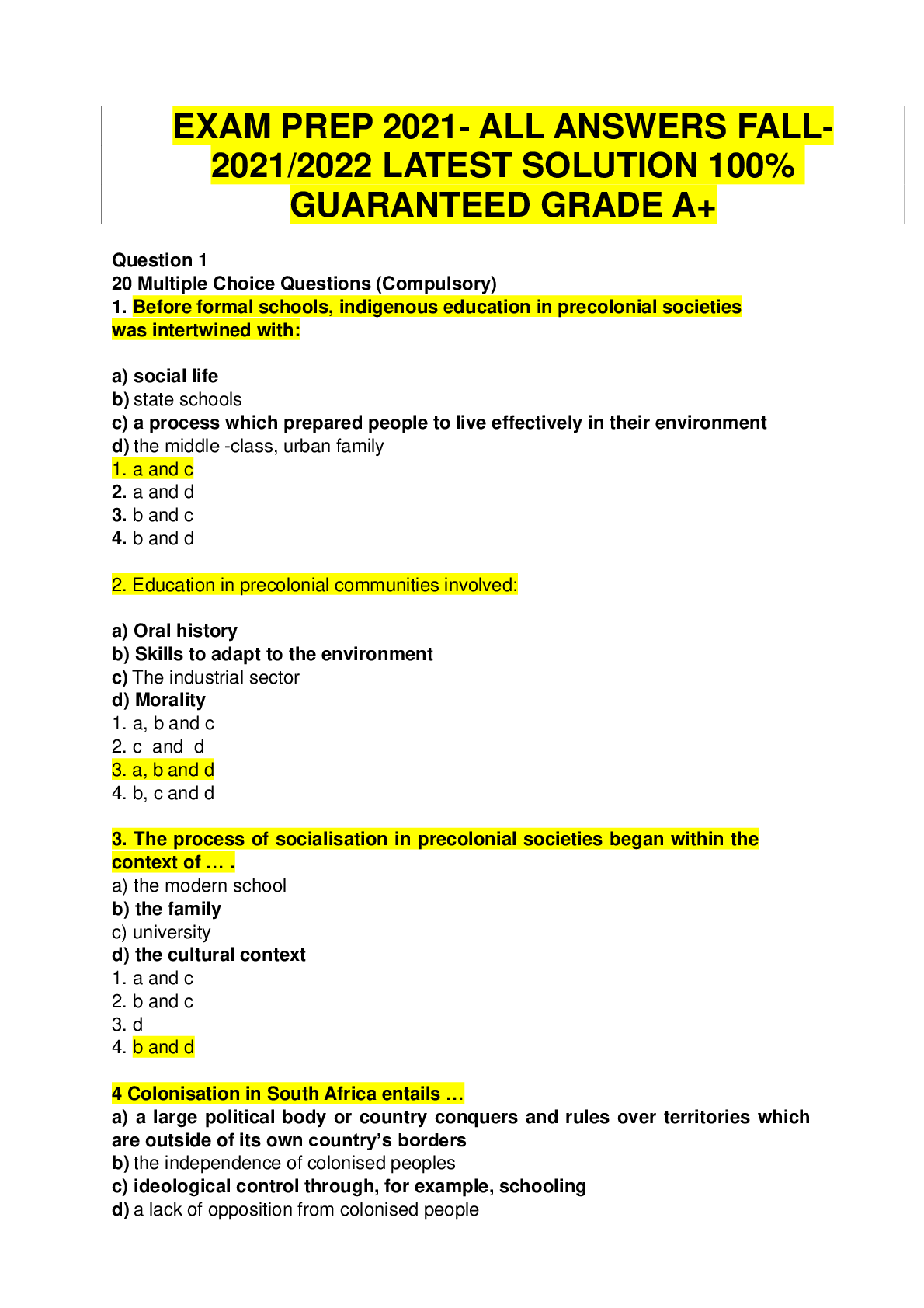
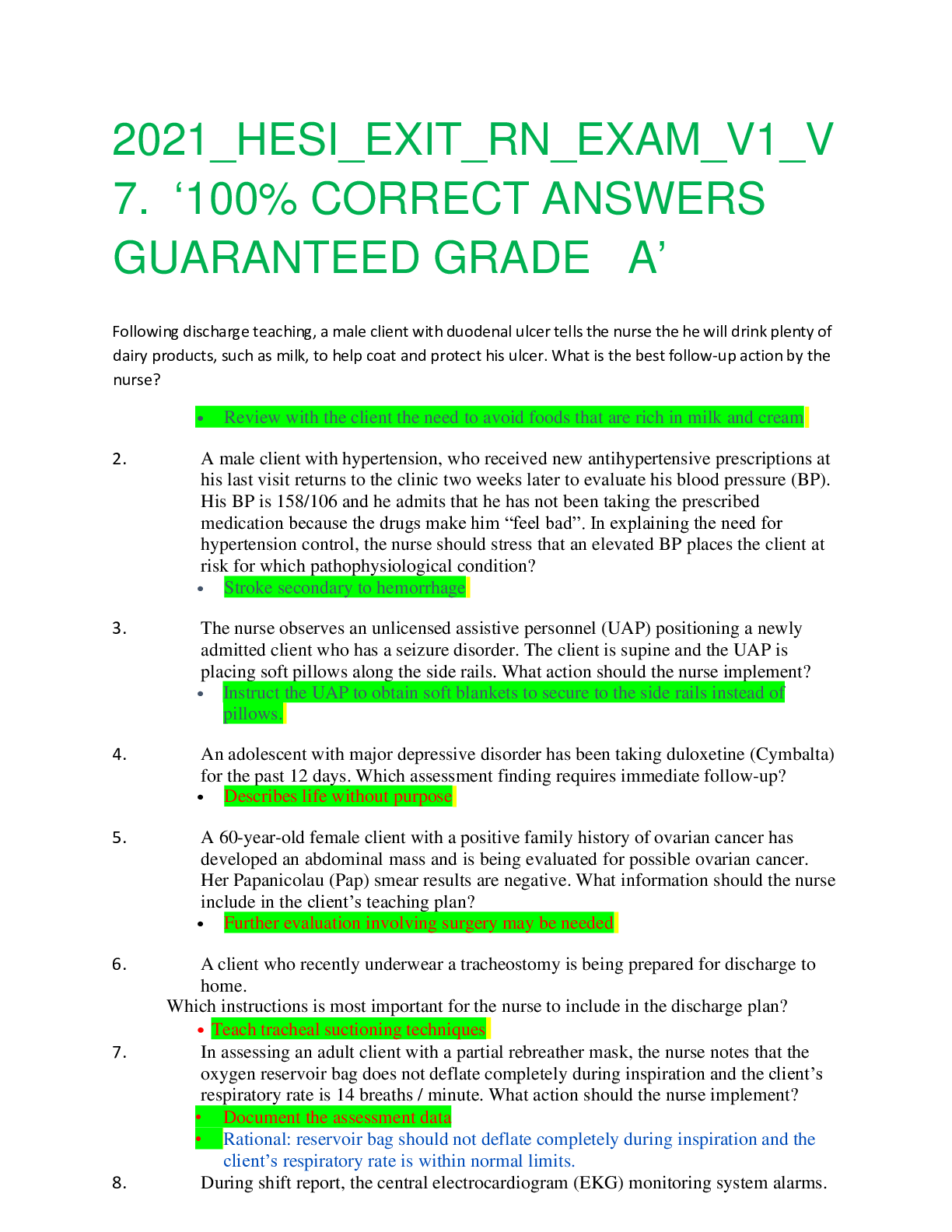
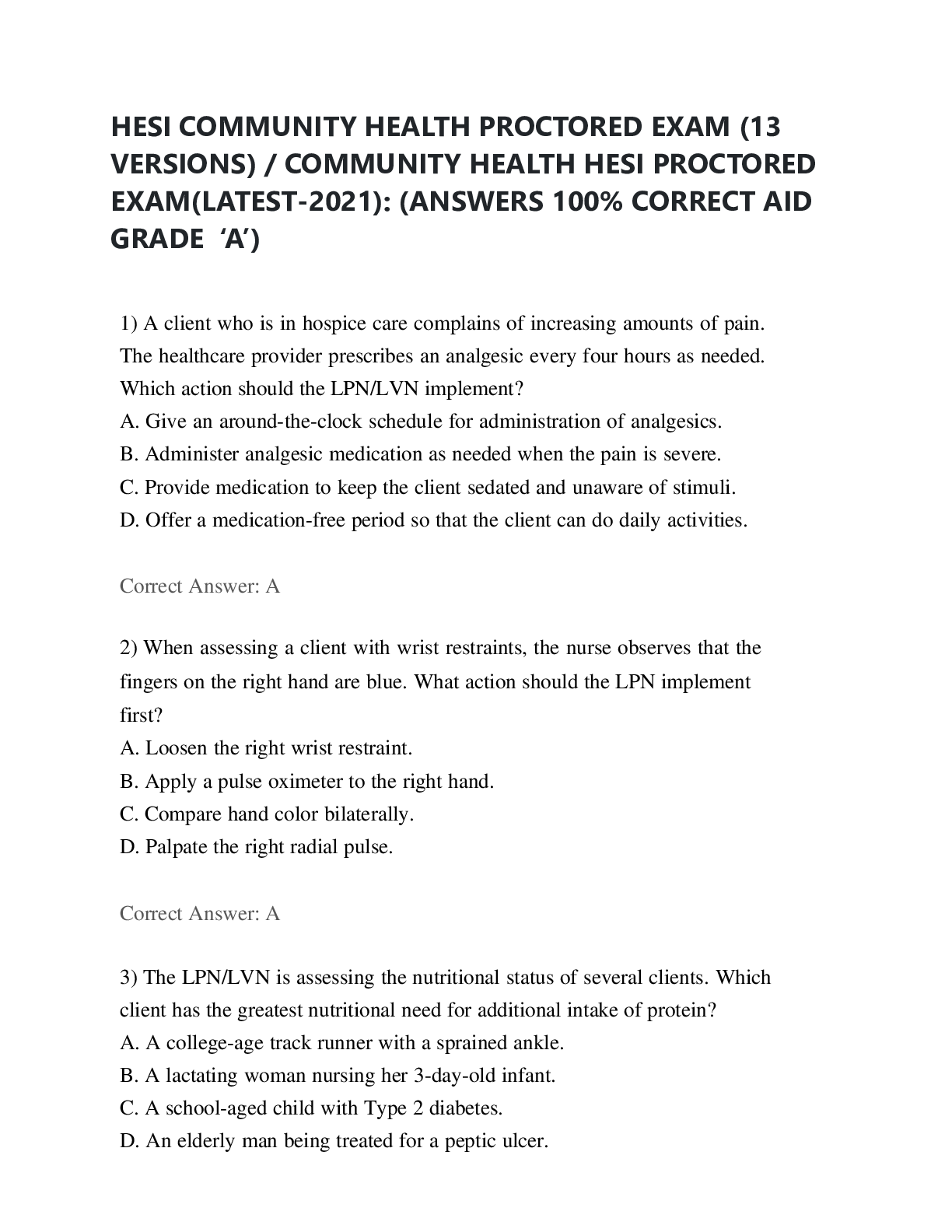

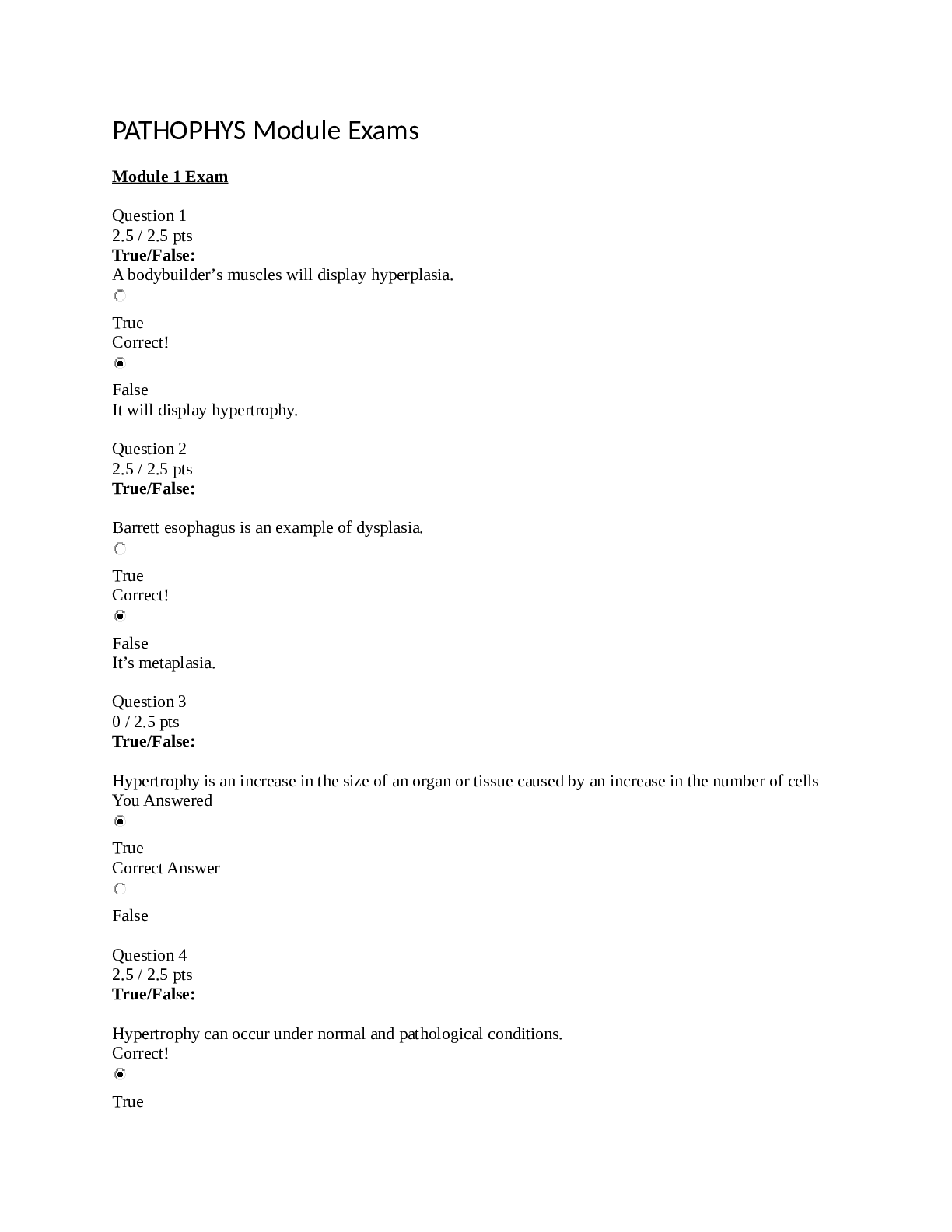

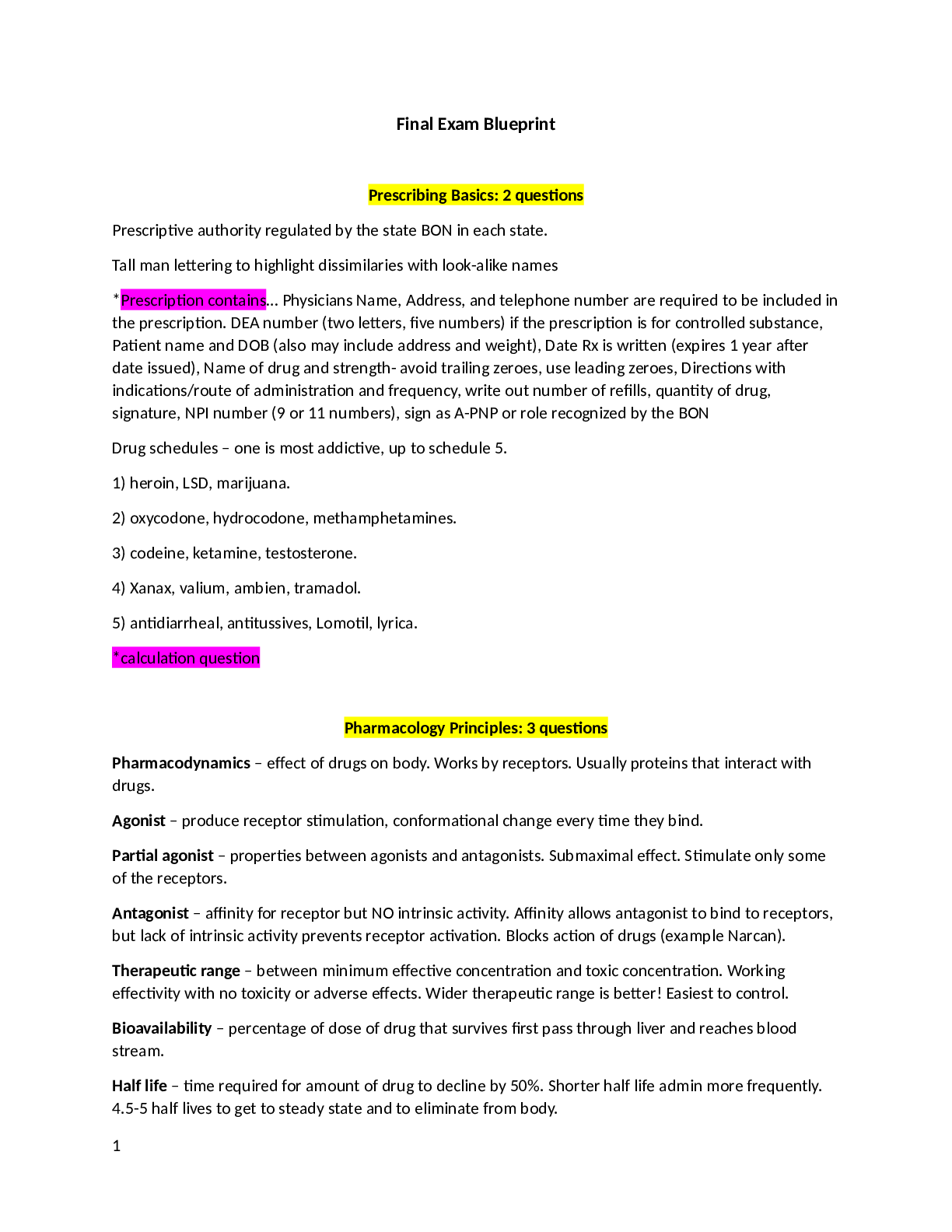

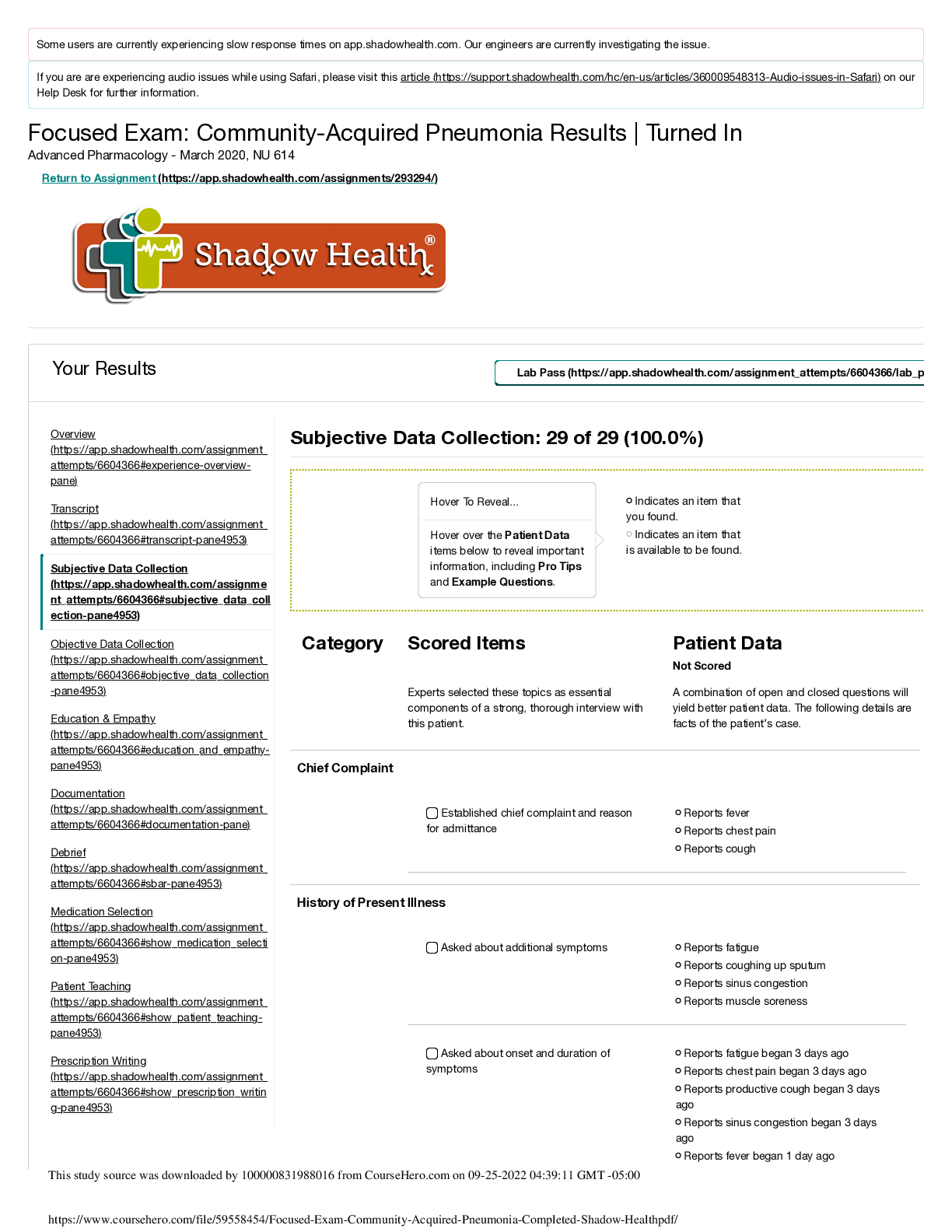
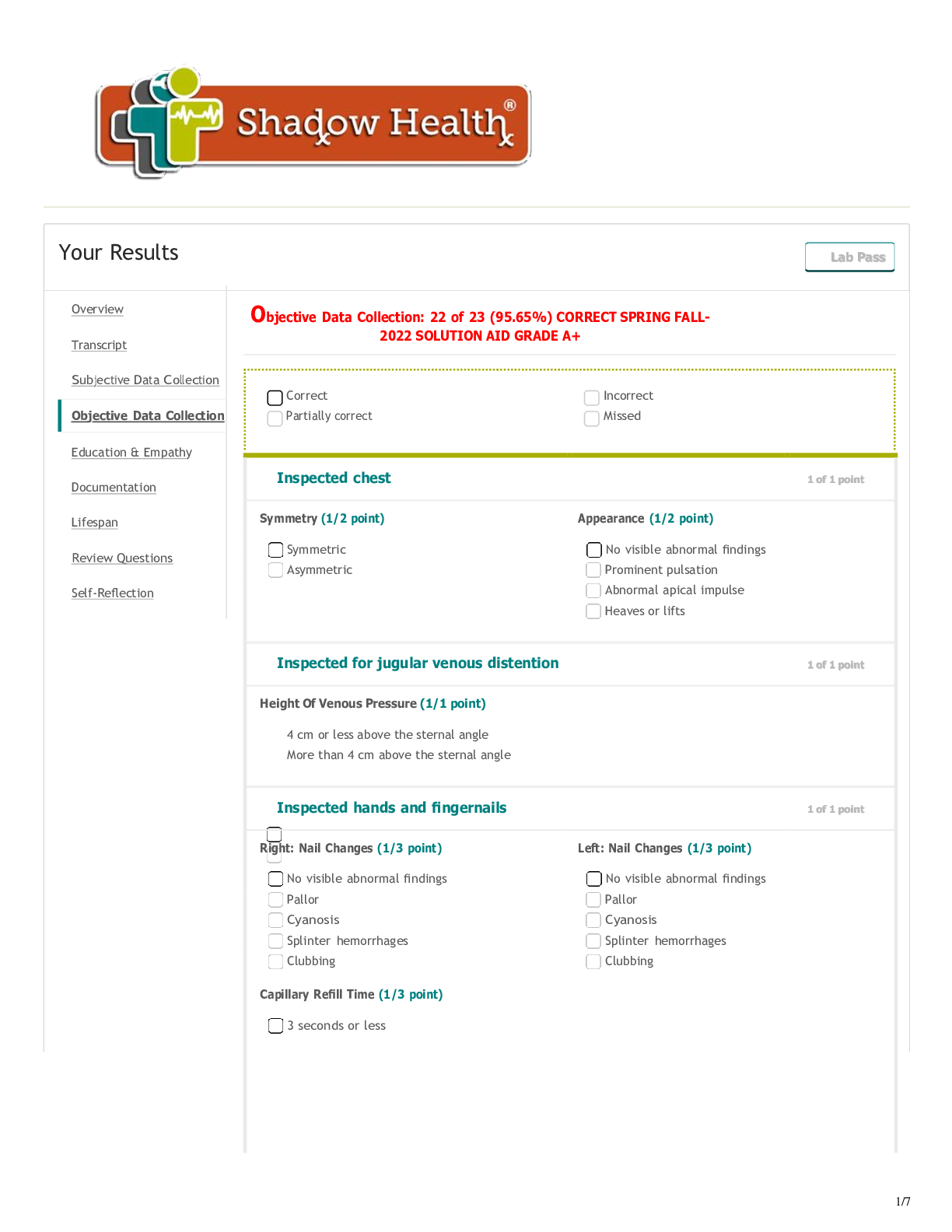
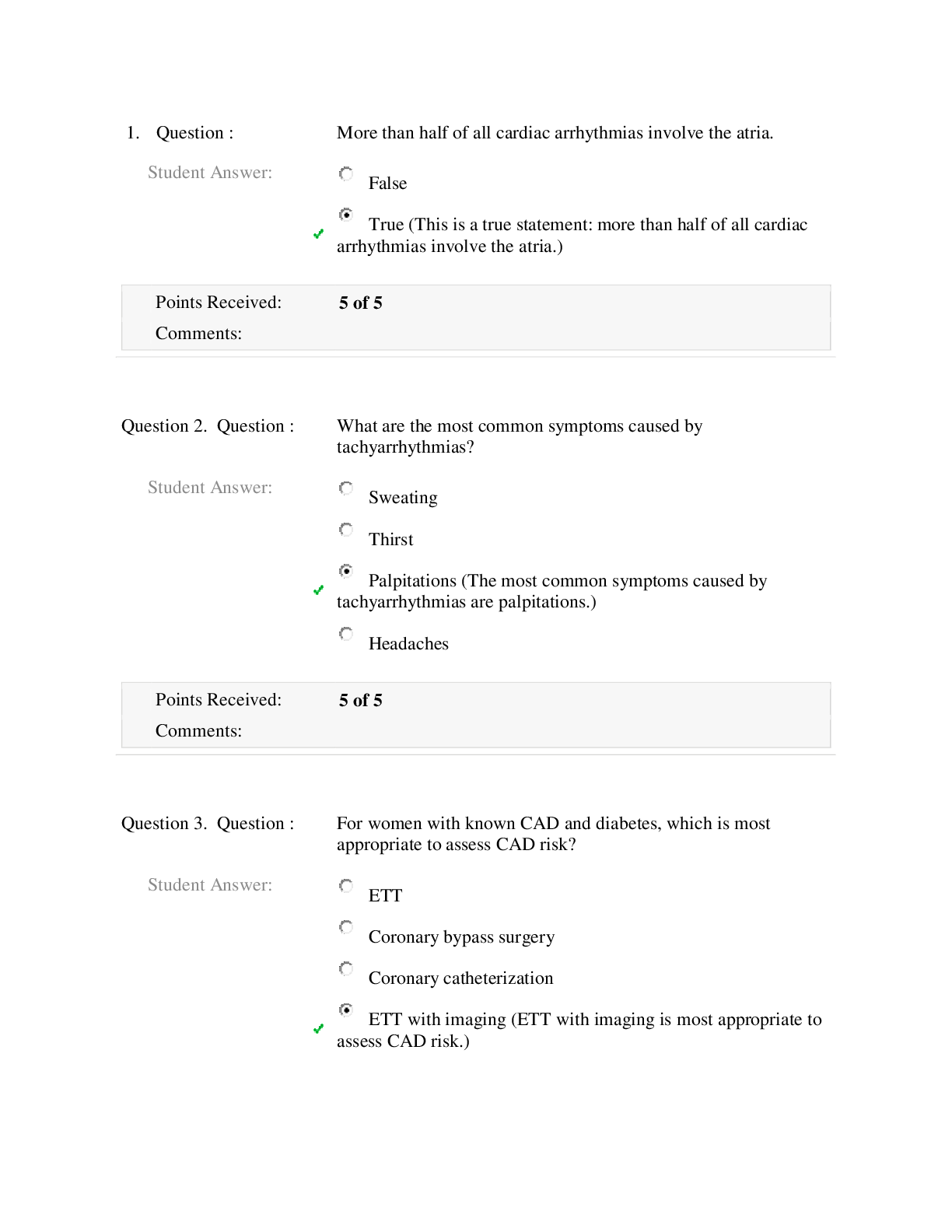


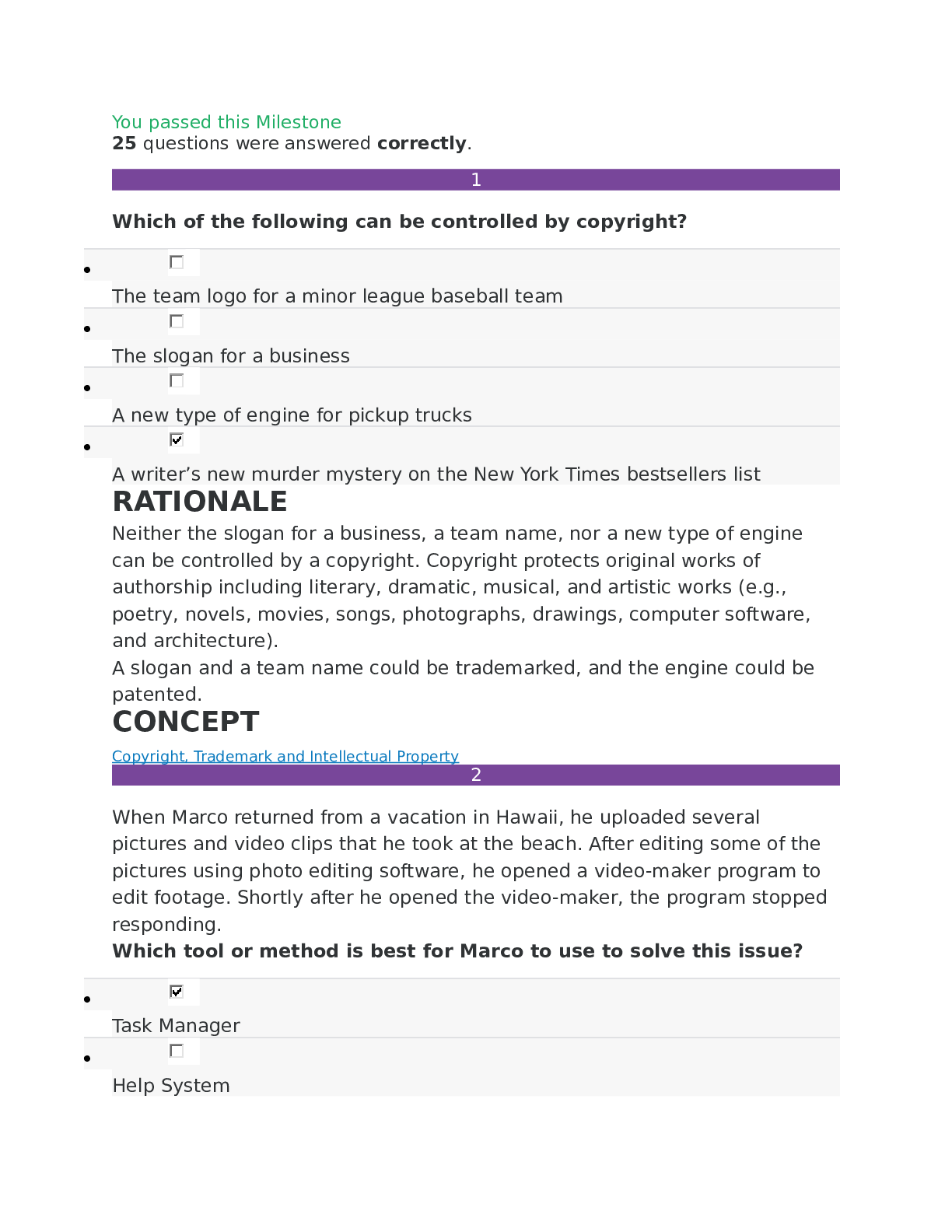
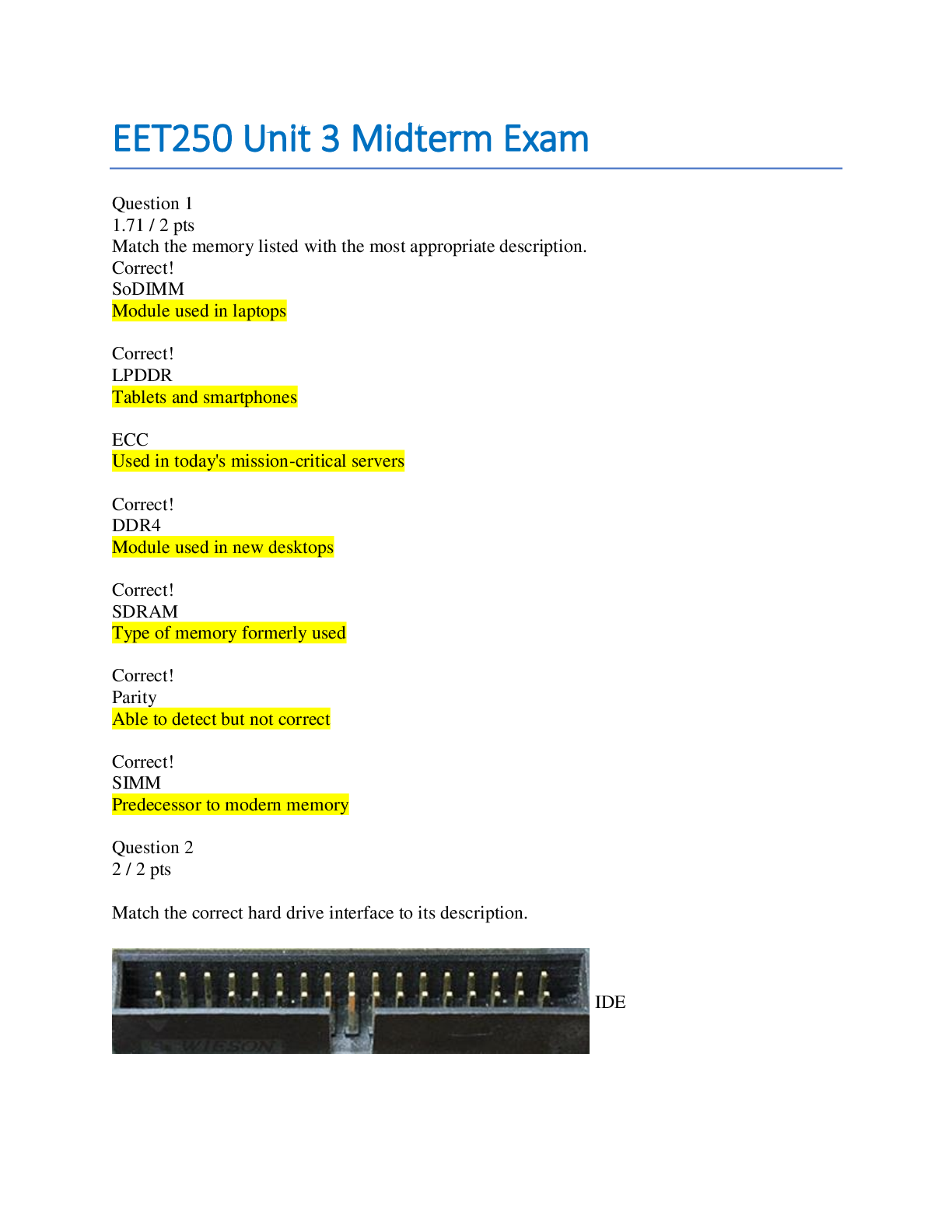
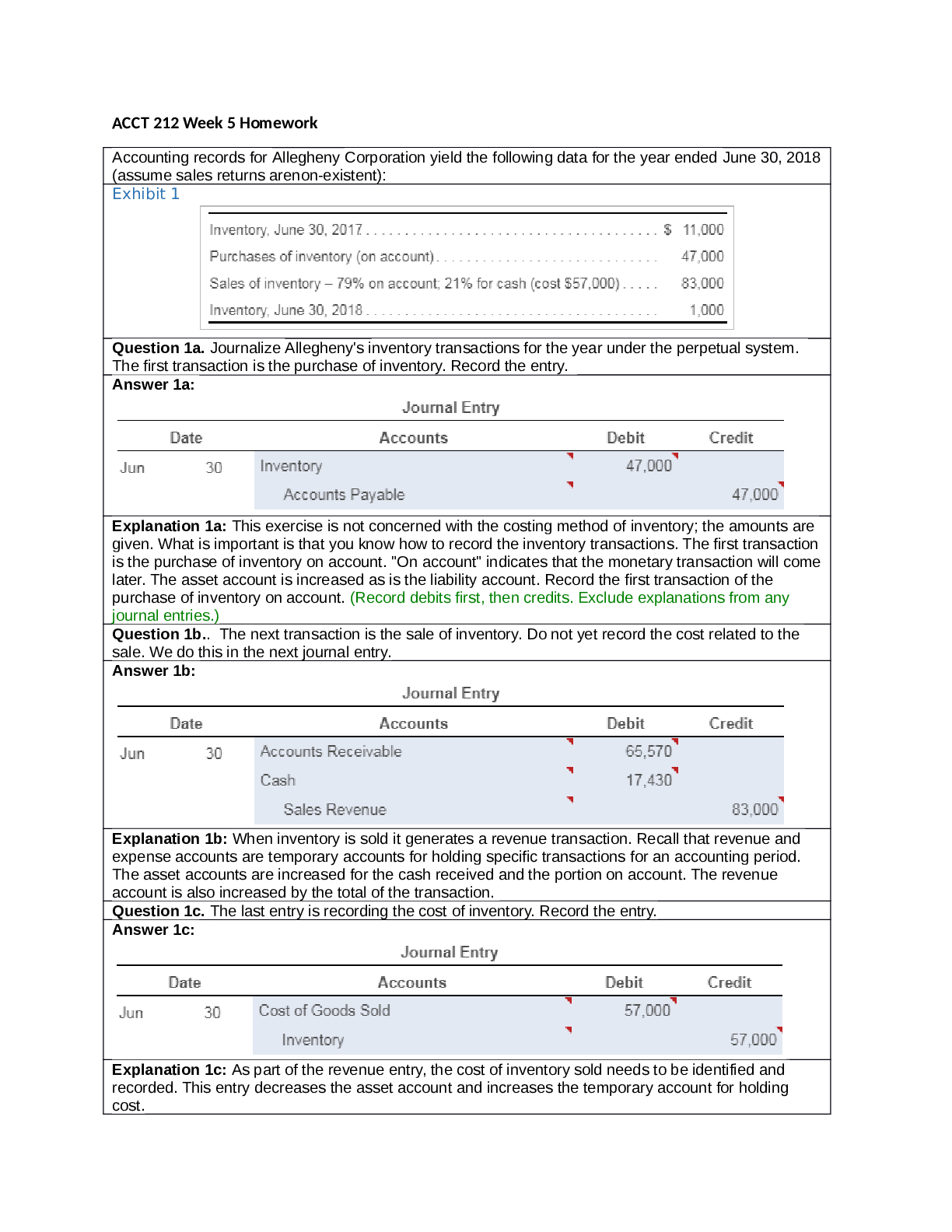



.png)
